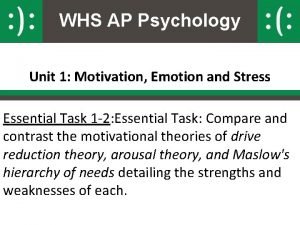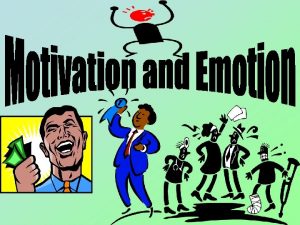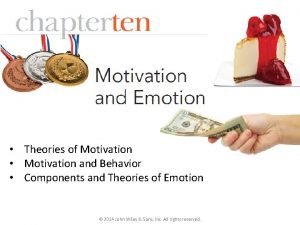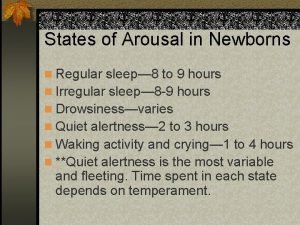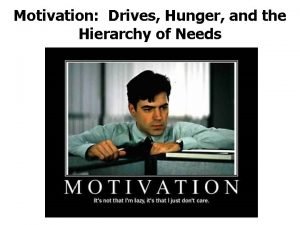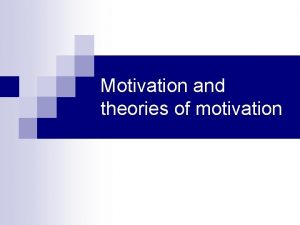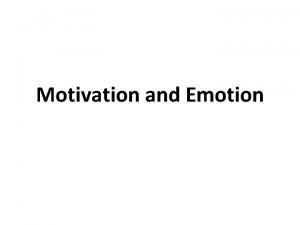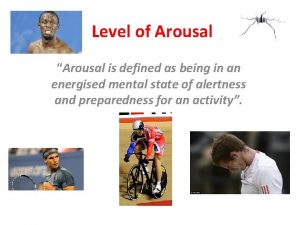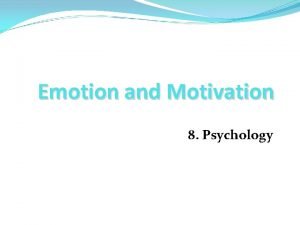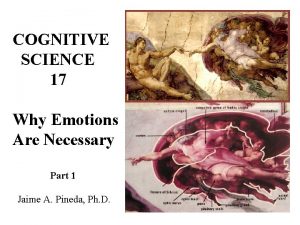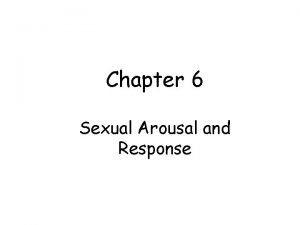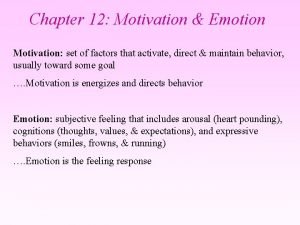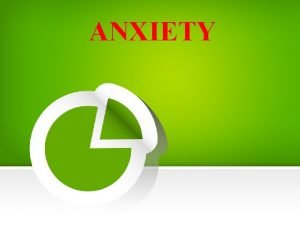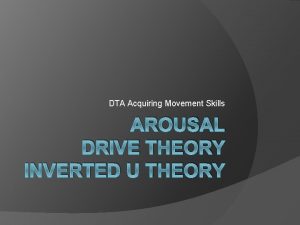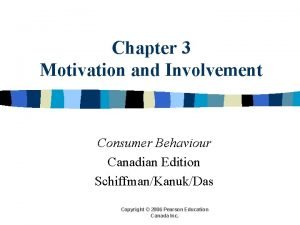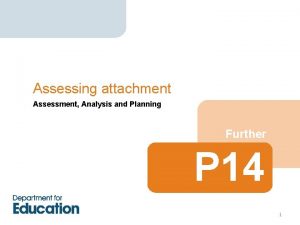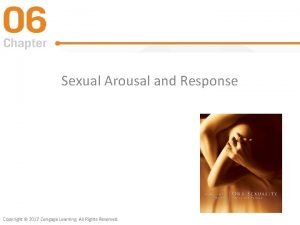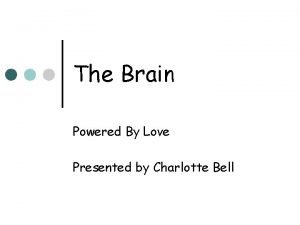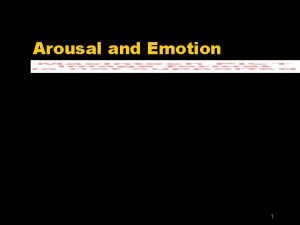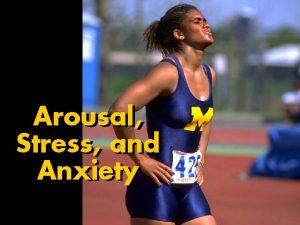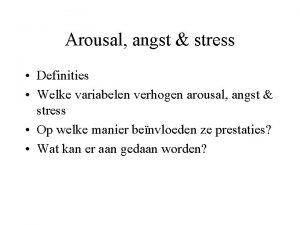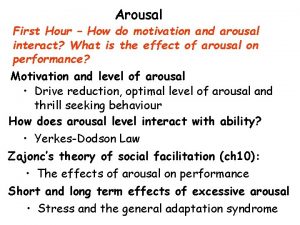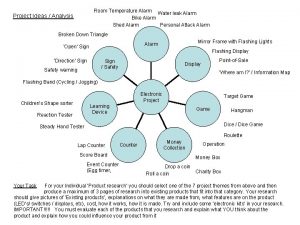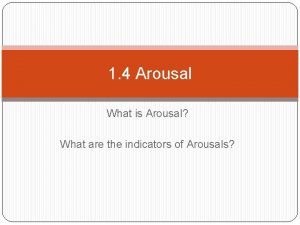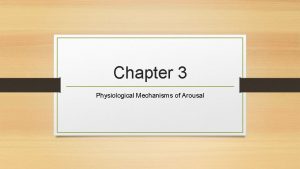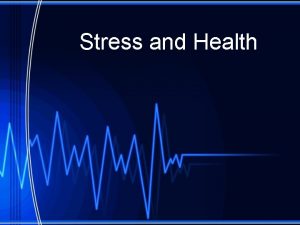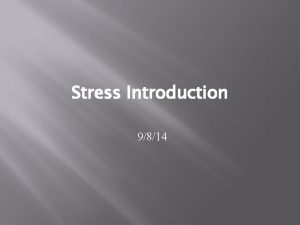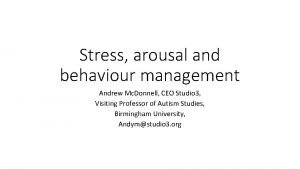Stress and Arousal Alarm reaction Alarm reaction emergency


































- Slides: 34

Stress and Arousal

Alarm reaction • Alarm reaction (emergency reaction) • W. Cannon (1920) investigated the ways in which the body changes when we are ready to react when we are highly aroused, either by anger or by fear. • These changes form a collection of different symptoms which work together to produce a result.

• The result is fight or flight response • Its effect was to produce a great deal of energy at very short time, which would enable the person either to run away from the alarming stimulus, or to attack it. • In both these situations, to be successful the body will need a great deal of energy, and the alarm reaction provides that. • Other animals show alarm reaction too. It seems to be a very fundamental process which evolved in mammals quite early on.

• For most modern sorts of of danger, we are not really expected to react physically by fighting or fleeing – the alarm reaction can be inappropriate. • Example:

• The body has generated all that energy, but with many modern dangers the thread is over before any of it could be at all used. • One reason why people with stressful jobs are healthier of they take regular exercise may be because the exercise is enabling them to „work off“ some physical energy that the stresses of their job will have brought on in the form of the alarm reaction.

Selye: General Adaptation Syndrome • Selye (1946) investigated how the alarm response altered when animals experienced continuous stress. He found that there was a long term adaptation which the body made to stress – General Adaptation Syndrome (GAS).

• In this, the body continued to produce very high levels of adrenaline (hormone that keeps the emergency reaction going in the body) and would be ready started into an emergency reaction. • Solomon (1963) showed that this long term adaptation to stress seriously affected the body’s immune system. • Individuals under long term stress were less resistant to disease and illness.

What is Stress? • Stress is the body's non-specific response to any demand made on it. • Stress is not by definition synonymous with nervous tension or anxiety. • Stress provides the means to express talents and energies and pursue happiness; it can also cause exhaustion and illness, either physical or psychological; heart attacks and accidents. • The important thing to remember about stress is that certain forms are normal and essential.

• As the body responds to various forms of physical or psychological stress, certain predictable changes occur. • These include increased heart rate, blood pressure (systolic and diastolic), and secretions of stimulatory hormones. • These responses to stress will occur whether the stress is positive or negative in nature. • The results of continuing stress may cause disruption in one or more of the following areas of health: physical, emotional, spiritual and/or social.

• Stress is a process that builds. It's more effective to intervene early in the process rather than later. Try to become aware of the signs that suggest the process has begun. • The following are indicators that you may be experiencing • • • General irritability Elevated heart rate Increased blood pressure Floating anxiety-anxious feeling for no specific reason Trembling Insomnia Headaches Indigestion Pain in neck and/or lower back Changes in appetite or sleep pattern

• A study by Lazarus and Mc. Cleary (1951) • They showed subjects particular words on a screen and then with some of the words giving them an electric shock. Other words were neutral and did not accompany a shock at all. • The subjects developed a reaction through classical conditioning to those words which had been accompanied by shock. When they saw them again they produced a strong galvanic skin resistance response.

A study by Lazarus and Mc. Cleary (1951) • When they presented the words subliminally (subjects were not aware of having seen anything at all) they still showed a strong galvanic skin resistance reaction. • We may be experiencing stress from something even though we do not realize it at the time. • This kind of stress can be very subtle.

Measuring emotional responses • There are several different ways that we can measure emotional reactions in the body. • Galvanic Skin Resistance (GSR) – when we are alarmed or stressed, we sweat slightly more than usual. Sensitive electrodes on the skin detect this, because the electrical resistance of the skin will go down if we sweat more.

Polygraphs • Some machines involve measuring galvanic skin resistance, heart and pulse rate, blood pressure, etc. • Lie – detectors • What is being detected is anxiety, or mild version of the alarm reaction. More people are anxious when they tell a lie, and so it will show on the „lie detector“. • But other, truthful answers may be just as stressful and someone who could be totally relaxed while lying would never be detected.

Autonomic Nervous System • All these changes are caused by a part of the Autonomic Nervous System, which has nerve fibres running from the brain stem and top of the spinal cord, to the internals organ of the body. • Two sections to the Autonomic Nervous System: – Sympathetic division – Parasympathetic division

Sympathetic and parasympathetic divisions Sympathetic division • Its brings about the emergency reaction, and triggers off the production of adrenaline to keep it going. • It is involved in „active“ emotions like fear, anger, or excitement. Parasympathetic division • It operates later to correct the balance and to restore body functions to normal operation. It is involved in the „quiet“ emotions, like depression or sadness, when we are not really active at all.


Coping behavior • Coping behavior allows to avoid the ill effects of stressful situation. • Many humans who seem to deal with stress effectively have developed a range of coping behaviors, which they can use to help them deal with problems as they arise, without becoming too anxious and worried.

Experiment - Weiss (1972) • A study by Weiss (1972) • Rats which were given a signal allowing them to predict when a shock was going to happen developed stomach ulcers. • Controls group which received the shock but not the signal did not developed stomach ulcers. • However, rats which could do something to avoid the shock, like jumping into a shuttle box, did not become ill. • Developing coping behavior.

Learned Optimism • A study by Seligman and Buchanan : • People who learn to maintain an optimistic attitude may not only avoid depression, they may actually improve their physical health.

The study: • University freshmen who participated in a workshop on cognitive coping skills reported fewer adverse physical problems and took a more active role in maintaining their health. • In the study, incoming freshmen were asked to complete a questionnaire designed to reflect their overall attitudes and coping behaviors. • The authors invited those students identified as the most pessimistic to participate in the study.

The study: • Workshop participants learned to dispute their chronic negative thoughts as well as learned social and work skills that can help avert depression. • After an 18 month follow up, the preliminary findings showed that 22 percent of the workshop participants had suffered moderate or severe depression, compared to 32 percent of the control group subjects. • Workshop participants also reported fewer health problems during the course of the workshop. • While the subjects were young and generally healthy, authors study could be replicated using older more vulnerable subjects.

Stress and coronary attack A study by Friedman and Rosenman (1974) • Some people in highly stressful jobs seem to be more likely to suffer from stress related coronary (heart) attacks. • These are quite common among high grade executives, who often have a high level of stress and have to engage in intensive and rapid decision making. • Friedman and Rosenman found that individual reactions to situations seem to vary in two main ways.

• Two characteristic styles of reacting: • Type A behavior • Type B behavior

Type A behavior • Type A individuals tend to be highly competitive, tense people, who always expect the highest possible standards, and worry a lot about their work even when they are at home. • These individuals often show Seley’s GAS – adaptation to long term stress. • They very much likely to suffer from coronary attack than Type B individuals are.

Type B behavior • Type B individuals may be just as energetic and work just as hard, but their attitude to their work is much more relaxed and practical. • They do not worry so much about things that they cannot do anything about, they are able to „leave their worries behind“ when they go home at the end of the day.

Stress Management Strategies The following are tips on how to maintain a healthier lifestyle and to prepare you to cope with the stress of everyday living. • • • Structure each day to include a minimum of 20 minutes of aerobic exercise. Eat well balanced meals, more whole grains, nuts, fruits and vegetables. Substitute fruits for desserts. Avoid caffeine. The substance may aggravate anxiety, insomnia, nervousness and trembling. Reduce refined sugars. Excess sugars cause frequent fluctuation in blood glucose levels, adding stress to the body's physiological functioning. Reduce alcohol and drugs. These substances may add to headaches and swelling, decrease coping mechanisms and add to depression.

6. Get a least 7 hours of sleep nightly. 7. Spend time each day with at least one relaxation technique - imagery, daydreaming, prayer, yoga or meditation. 8. Take a warm bath or shower. 9. Go for a walk. 10. Get in touch! Hug someone, hold hands, or stroke a pet. Physical contact is a great way to relieve stress.

Arousal • Arousal refers to the amount of excitation of the Autonomic Nervous System, which a person or animal is experiencing. • Excitement of a particular happy or thrilling time so as to the excitement of fear or anger.

Arousal and performance • Up to a point, arousal can improve our performance on a task. • Beyond that point performance will tend to decline. • If we are too aroused, whether by fear, anger or happiness, we are unlikely to be able to do our best possible work. • The optimal level of arousal is not the same as the highest level.

Yerkes-Dodson Law

• A complicated task, such as an exam, will suffer very readily from a level of arousal which is too high. • A simple task, such as sorting out sweets on a production line, will not suffer so rapidly if the person who is doing it is upset or aroused in other ways, but if the arousal level gets too high then that also will suffer.

• One way that many people find they can do much better in exams, is to develop simple strategies which will reduce arousal, such as doing deep breathing relaxation exercises, or walking to the exam.

Arousal, music, and performance
 Life saving equipment
Life saving equipment True strain formula
True strain formula Chapter 10 stress responses and stress management
Chapter 10 stress responses and stress management Definition of normal stress
Definition of normal stress What is drive reduction theory
What is drive reduction theory Examples of physiological arousal
Examples of physiological arousal Arousal theory psychology
Arousal theory psychology States of arousal
States of arousal Arousal disorder symptoms
Arousal disorder symptoms Sexual arousal in men
Sexual arousal in men Incentive theory
Incentive theory Contoh teori arousal
Contoh teori arousal Ap psychology motivation and emotion
Ap psychology motivation and emotion Evolutionary theory of motivation
Evolutionary theory of motivation Nnn motivation
Nnn motivation Primary emotions
Primary emotions Arousal
Arousal Physiological arousal
Physiological arousal Motivation psychology
Motivation psychology Physiological arousal
Physiological arousal Physical arousal
Physical arousal Sexual arousal in men
Sexual arousal in men Physiological arousal theory
Physiological arousal theory Fysiologisch arousal
Fysiologisch arousal Arousal addiction
Arousal addiction Anxious arousal meaning
Anxious arousal meaning Arousal en el deporte
Arousal en el deporte Inverted u theory diagram
Inverted u theory diagram Biogenic needs marketing
Biogenic needs marketing Arousal relaxation cycle
Arousal relaxation cycle Drive reduction theory
Drive reduction theory Sexual response cycle psychology definition
Sexual response cycle psychology definition Arousal cycle
Arousal cycle What is sexual arousal
What is sexual arousal The self-sabotage cycle
The self-sabotage cycle




